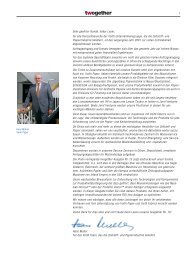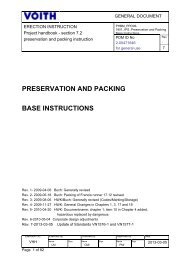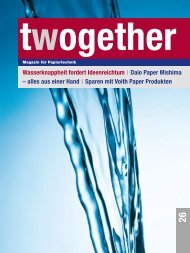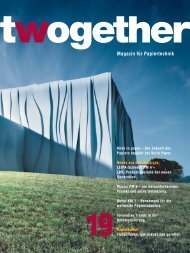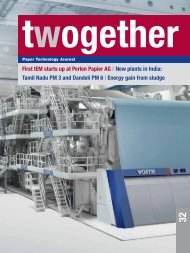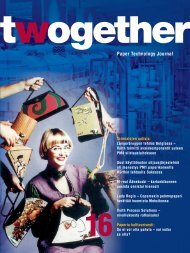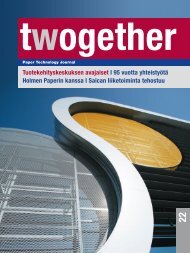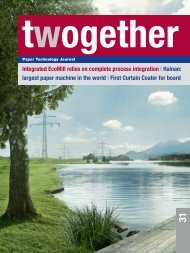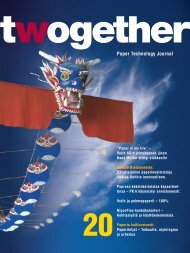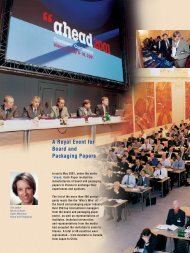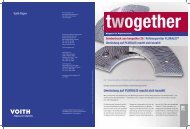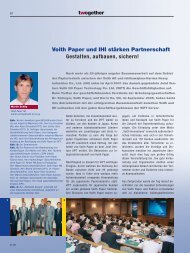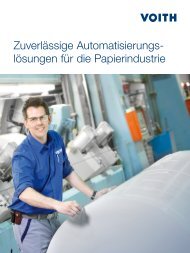Paper Technology Journal 19 - Voith
Paper Technology Journal 19 - Voith
Paper Technology Journal 19 - Voith
Create successful ePaper yourself
Turn your PDF publications into a flip-book with our unique Google optimized e-Paper software.
Machine-integrated Sensors<br />
Conventional quality control systems require<br />
places with open draw, where the<br />
paper web is accessible from top and<br />
bottom, for installation in the paper machine.<br />
In modern paper machines with<br />
largely closed web runs, such places are<br />
becoming increasingly hard to find.<br />
New measuring methods focus on singlesided<br />
quality measurement, increasingly<br />
even in places hard to access to date. The<br />
attempt becomes even harder, because<br />
this is often a great challenge due to the<br />
ambient conditions. And then there are<br />
the sensors of similar design, which do<br />
not monitor the paper, but the production<br />
process.<br />
As examples, we mention the traversing<br />
moisture measurement after the press<br />
section by the EnviroScan (Fig. 1) and<br />
the traversing felt condition measurement<br />
by a permeability sensor and a moisture<br />
sensor (Fig. 2), all done under difficult<br />
ambient conditions in the wet end of the<br />
paper machine. There, potential trouble is<br />
detected early, which allows faster control,<br />
as the disturbance is detected close<br />
to the place of origin.<br />
The EnviroScan can detect characteristic<br />
features in the moisture profile of the<br />
web after the press very quickly. This allows<br />
an assessment of the mechanical<br />
dewatering behavior of the press. The op-<br />
erator can recognize the influence of the<br />
wet end and the press on the moisture<br />
profile.<br />
The felt condition measurement can be<br />
used to assess the felt or, in conjunction<br />
with an automatic felt cleaning device, for<br />
specific felt cleaning action at the same<br />
time. The latter guarantees longer felt life<br />
and with it fewer machine downtimes for<br />
felt change.<br />
Future quality control technology will be<br />
more concerned with the process itself<br />
not only with the final product. With<br />
smooth processes, quality is speaking up<br />
for itself.<br />
Process Analysis<br />
Traditional analytical technology was<br />
based on the assessment of process data<br />
in graphic representation (trends). This<br />
can be refined further if a screen page<br />
can display both quality and process variables<br />
in the same diagram at the same<br />
time.<br />
The present example (Fig. 3) shows the<br />
development of a felt over a period of<br />
more than 3 weeks. Specific cleaning allows<br />
one to extend the life of the felt. The<br />
data, however, show that the impact of<br />
cleaning does not have lasting effects.<br />
Twelve hours after washing, the felt<br />
reaches the same condition as before the<br />
cleaning process.<br />
Fig. 1: EnviroScan installation location.<br />
Fig. 2: Felt condition measurement.<br />
Press felt<br />
Permeability sensor<br />
Moisture sensor<br />
57<br />
<strong>19</strong>/05<br />
1<br />
2



